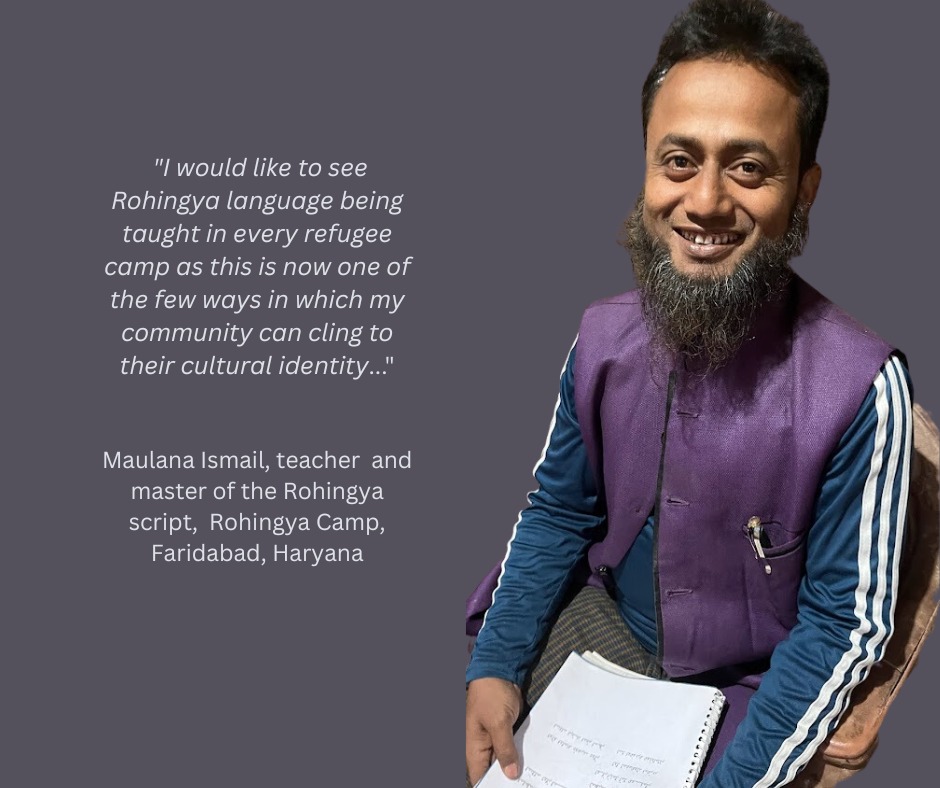
Rohingya Stories
The Rohingya language is spoken and understood by about ten lakh people in Myanmar (Rakhine State) and by two lakh people in Bangladesh. Although accompanied by a rich literary tradition, the language had no definite script until Islamic scholar Mohammad Hanif developed a standardized script in the eighties. Today, it has become a crucial symbol of the identity and culture of the persecuted minority -- but few Rohingya can actually read and write in their language even today.
In a ramshackle camp in Faridabad, Haryana, Maulvi Ismail teaches it to all the camp children. From a book that he has had printed from a PDF, its pages withered with use, Ismail recites poetry to the children. He also texts in Rohingya, ever since Google introduced a keypad in the Rohingya script.
“Some people in the camp say that the Rohingya script is useless, that their children will be better off learning English," he says. "To them, I say how can we forget where we have come from? This script is our culture… I believe that every camp should have a Rohingya language class so that we can all stay true to our roots even though we have been displaced from our homeland.
By the Rohingya Stories
